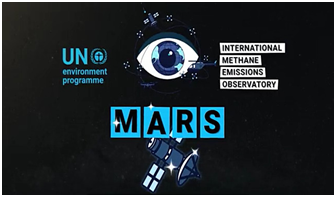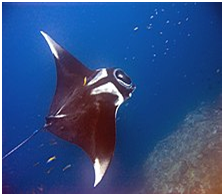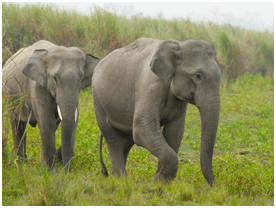

Context
A new satellite-based Methane Alert and Response systemhas been launched at the 27th Conference of Parties (COP27)to help governments detect methane emissions and tackle them.
About
Methane Alert and Response System (MARS):
- MARS is a part of global efforts to slow climate change by tackling global warming gas.
- It will use state-of-the-art satellite data to identify significant emission events, notify relevant stakeholders, and support and track mitigation progress.
- MARS will integrate data from the rapidly expanding system of methane-detecting satellites to include lower-emitting area sources and more frequent detection.
- Data on coal, waste, livestock, and rice will be added gradually to MARS to support the Global Methane Pledge
- India has not signed up for the Global Methane Pledge.

- India has not signed up for the Global Methane Pledge.
Components of the Methane Alert and Response System:
- MARS will use data from global mapping satellites to identify very large methane plumes and methane hot spots and data from high-resolution satellites to then attribute the emissions to a specific source.
- UNEP(United Nations Environment Programme) will then notify governments and companies about the emissions, either directly or through partners, so that the responsible entity can take appropriate action.
- If requested, MARS partners will provide technical or advisory services such as help in assessing mitigation opportunities.
- UNEP will continue to monitor the event location and make the data and analysis available to the public between 45 and 75 days after the detection.
|
About Methane:
|
Steps taken to Curb Methane Emissions:
- COP 26 Pledges: At COP26 in Glasgow, over 100 countries signed an agreement to cut methane emissions by 30% by 2030.
- The US President has announced the Global Methane Pledge, which is a US-EU-led effort to cut methane emissions by a third by the end of this decade.
- MethaneSAT: Controlling methane emissions will require further scrutiny of its sources. To this end, satellites that will track methane leakage such as MethaneSAThave been planned to launch.
- The International Energy Forum (IEF) launched the IEF Methane Initiative in June 2021 to develop a methane emissions measurement methodology.
India's methane emissions and mitigation initiative
- Global Methane Initiative (GMI) website, India ranks fourth, and its methane emissions are nearly one-third that of China.
SPECIES IN NEWS
Manta rays

- Context:Scientists have found a huge group of manta rays off the coast of Ecuador. The group has more than 22,000 manta rays, more than 10 times the population estimates in other regions.
- About
- Manta rays (Mobula birostris) are the largest rays in the world.
- Shape: large, flat, diamond-shaped bodies, which are characterised by triangular pectoral fins.
- Manta rays have two horn-shaped fins protruding from the front of their heads, which has also given them the nickname "devil fish".
- Habitat: The sea creatures are found in in tropical, subtropical, and temperate ocean waters across the globe.
- Conservation Status: In 2019, the manta rays again entered the endangered list of the International Union for Conservation of Nature (IUCN).
Indian Elephant (Elephas maximus indicus)

- Context: Tamil Nadu’s Forest Department has introduced an elephant death audit framework to put in place a more detailed and transparent process for recording and monitoring elephant deaths in the State.
- Species:There are three subspecies of Asian elephants – the Indian, Sumatran, and Sri Lankan.
- Protection Status: ‘Endangered’ as per the IUCN Red List.
- Threats:Habitat loss, Degradation, and Fragmentation


